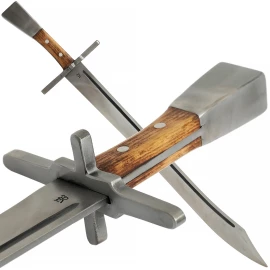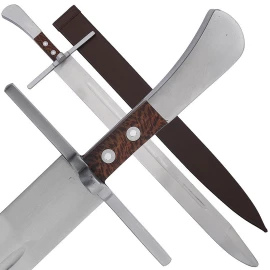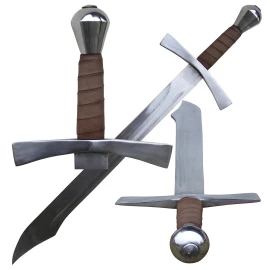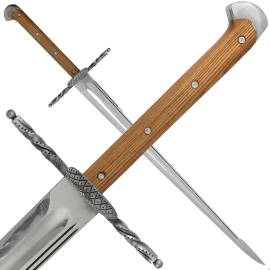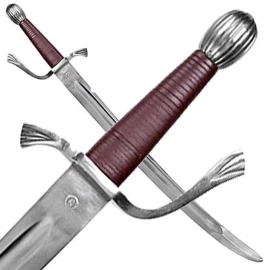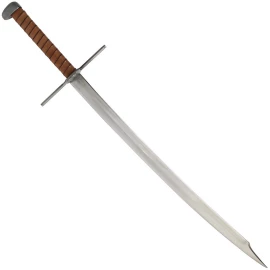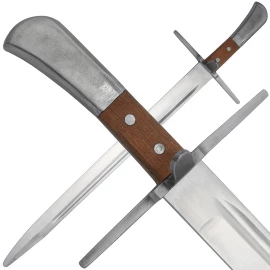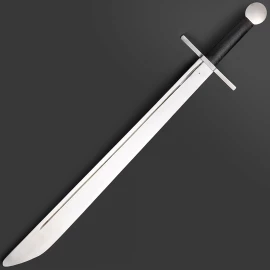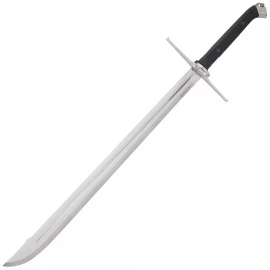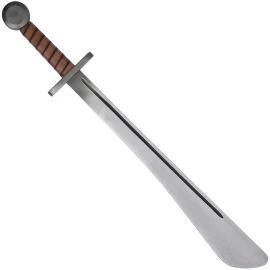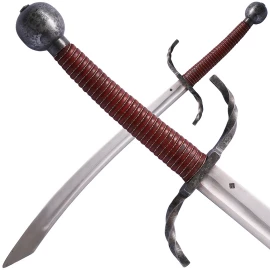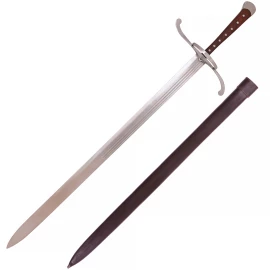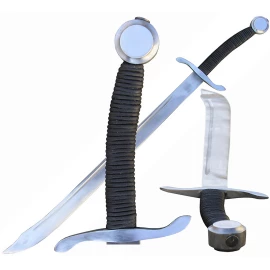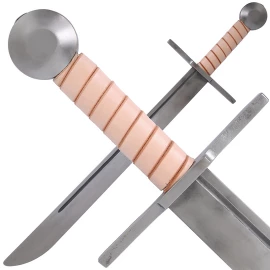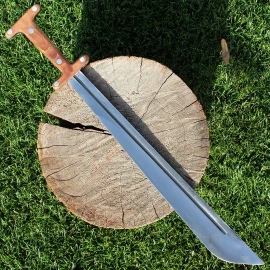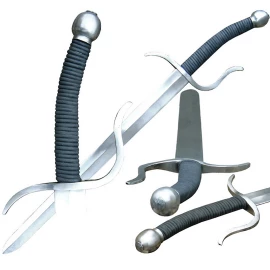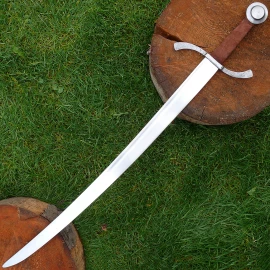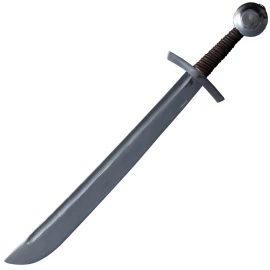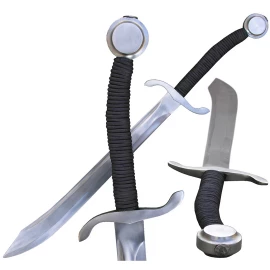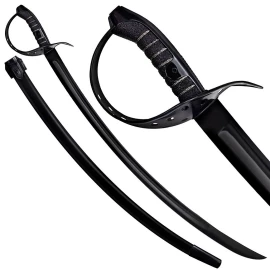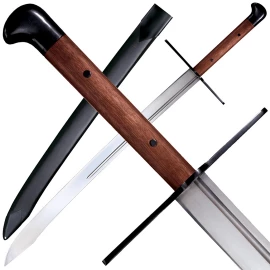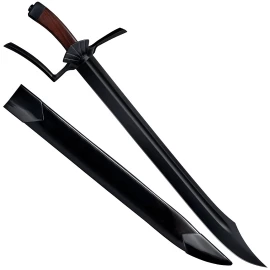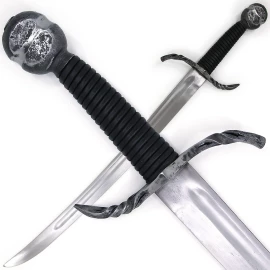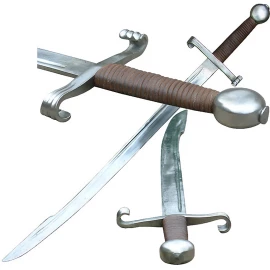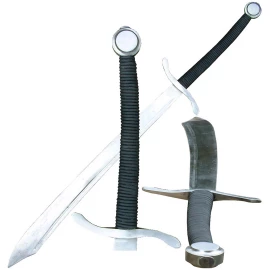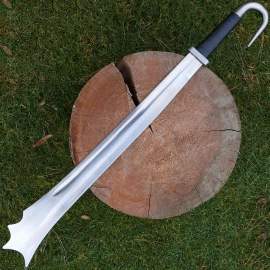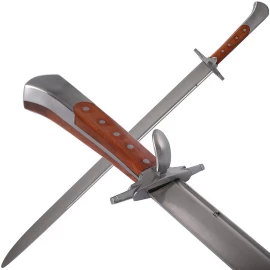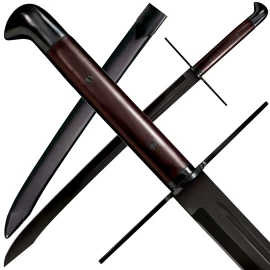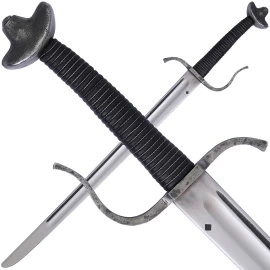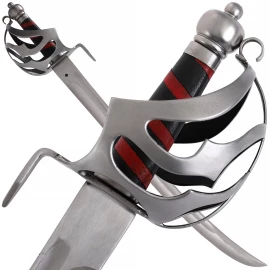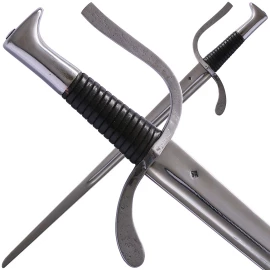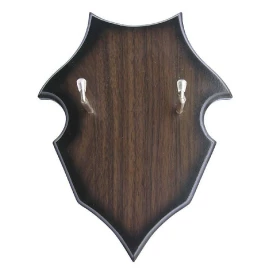Cleaver Falchion, 1250-1300
This type of falchion appears in some pictures of the "Cantigas de Alfonso X el Sabio" as a weapon with high defence efficiency than a dagger. The blade designs of falchions varied widely across the continent and through the ages. They almost always included a single edge with a slight curve on the blade towards the point on the end and most were also affixed with a quilloned cross guard for the hilt in the manner of the contemporary long-swords. Unlike the double-edged swords of Europe, few actual swords of this type have survived to the present day; fewer than a dozen specimens are currently known. Two basic types can be identified: Celaver Falchion and Cusped Falchion. Further product information ...
Would you like to be notified as soon as the item is in stock?
You will receive a short e-mail as soon as we have it back in stock.
Cleaver Falchion, 1250-1300
One of the few surviving falchions (the Conyers falchion) is shaped very much like a large meat cleaver, or large bladed machete. This type is also illustrated in art (e.g. the Westminster Hall mural, shown to the right) The type seems to be confined to the 13th. and 14th. Centuries. Specifications:
- made of spring steel
- the blade has rounded edges
- brass riveted wood handle
- Total length approx. 641mm
- Blade length approx. 495mm
- Profile of the blade at the handle approx. 31.8 * 3.7mm
- Profile of the blade in the widest point (about 50mm from the tip) approx. 46.6 * 3.63mm
- The fuller is approx. 5mm wide and approx. 410mm long
- Thickness of the striking edge approx. 2mm
- POB approx. 12cm off the guard
- Delivery without scabbard
- Weight approx. 722 g
The materials used and the craftsmanship would allow the use this prop in re-enactment and theatrical combat shows. Since the manufacturer provides no service, this weapon is sold as a purely decorative item that is not designed for re-enactment or battle combats.
We are here for you!


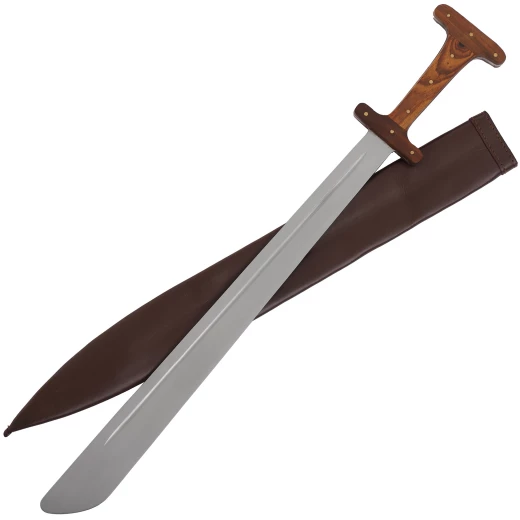






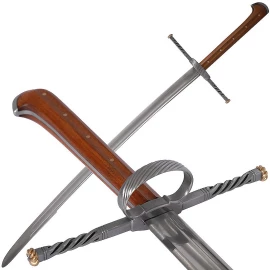
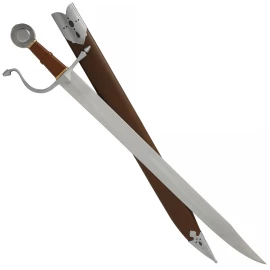


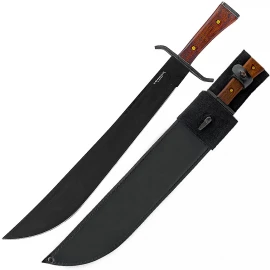
.2152382459.1712903949.jpg.webp)
